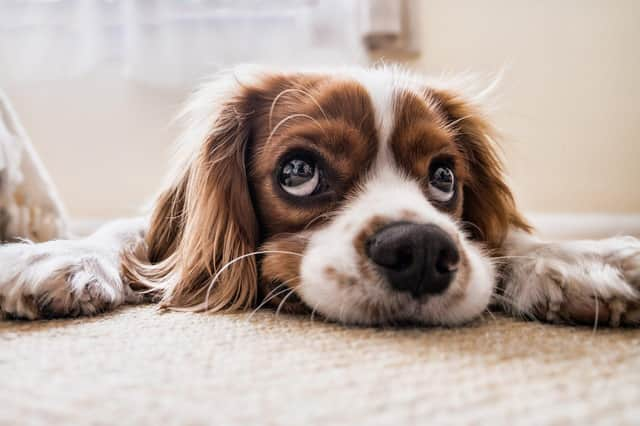FARMING: Helping a dog cope with being alone


There are undoubtedly many benefits to owning pets and, in a time when normal socialisation has reduced, the companionship of an animal is something to be treasured.
Unfortunately, the recent surge in demand for pets has also brought problems and the massively inflated prices have turned pets into a commodity. There has been a rise in animals suffering from separation anxiety and, when normality resumes, how well adapted will our pets be to spending prolonged periods of time alone?
Advertisement
Hide AdAdvertisement
Hide AdLearning to be alone is an important part of your dog’s training and it is now more important than ever to start this process early. Separation anxiety in animals can be shown in many ways. The most common signs are: destructive behaviours (targeted at chewing the door you left the house from), vocalisation, inappropriate toileting, pacing, self mutilation and repetitive behaviour; these start soon after their owner’s departure.
Here are a few suggestions for how to train your animals to be happy alone. It is important to practice separation gradually and very slowly to build up your animals tolerance.
Safe environment: Make sure you animal has a comfy and safe bed or covered den of their own away from the loudest area in the house. Encourage them to spend time in their bed when you are doing other jobs such as cooking or working. Use high values rewards such as treats to associate their bed and being alone with positive outcomes. You can leave clothes with your smell such as an old top with them to make them feel safe. High value treats: Giving your animals treats can keep them stimulated while you are away while simultaneously reinforcing the positive message of being alone. Puzzle boxes or plastic “kong” toys or can be filled with food or treats and can also be frozen to allow them to take longer for your pet to enjoy. Take these away when you return and only use them as a “special” toy when you are away.
Walk without your animal: Before leaving your animal alone ensure that they have been out to the toilet or for a short walk, give them their high value treat and then take a short walk, slowly increasing how long you are gone. You can try leaving the radio on and shutting the curtain. You can also use calming aids around the house such a feliway plug in diffusers or adaptil pheromone collars.
If these aren’t helping then it’s worth speaking to a vet. We are always happy to discuss your animals welfare either in person or over the phone